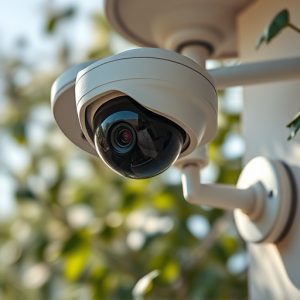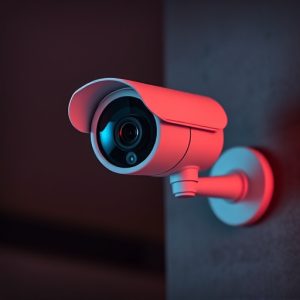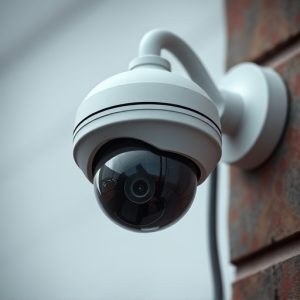Realistic Fake Cameras: Effective Shoplifting Prevention for Businesses
Shoplifting is a global issue costing billions annually, prompting businesses to explore innovative…….
Shoplifting is a global issue costing billions annually, prompting businesses to explore innovative solutions like realistic fake cameras. These decoy devices mimic genuine security equipment and can be strategically placed throughout stores or warehouses to deter theft. Compared to traditional systems with limitations in image quality or triggers, realistic fake cameras offer a cost-effective and highly effective alternative, significantly reducing theft attempts. Their popularity is growing as businesses adopt advanced security measures, integrating these camera systems with robust security protocols for enhanced protection against shoplifting.
In today’s competitive retail landscape, shoplifting poses a significant threat to businesses, with losses estimated at billions annually. Traditional security measures like guards and alarms often fall short, prompting a new approach: realistic fake cameras as decoys. This article delves into the growing trend of employing these innovative devices to deter theft. We explore their impact, limitations of conventional systems, implementation strategies, and how business owners can maximize the effectiveness of these powerful tools, ensuring a safer shopping environment without breaking the bank.
- Understanding the Impact of Shoplifting on Businesses
- Traditional Security Measures and Their Limitations
- The Power of Realistic Fake Cameras as a Decoy
- Implementing and Maximizing the Effectiveness of Decoy Camera Systems for Business Security
Understanding the Impact of Shoplifting on Businesses
Shoplifting, a persistent and significant issue for businesses worldwide, carries substantial economic and psychological impacts. According to recent studies, retail theft costs the global industry billions annually, with average losses per store reaching impressive figures. Beyond financial constraints, shoplifting can severely affect a business’s morale and reputation. The constant fear of loss discourages customers and may lead to a decline in sales and footfall.
Realistic fake cameras, designed as decoys, offer an innovative solution to combat this problem. These sophisticated devices mimic the appearance and behavior of genuine security equipment, acting as powerful psychological deterrents. By strategically placing these realistic fake cameras around stores or warehouses, businesses can significantly reduce theft occurrences without the need for excessive physical security measures. This approach not only protects merchandise but also sends a clear message to potential thieves, enhancing overall business security.
Traditional Security Measures and Their Limitations
Traditional security measures, such as static CCTV cameras and alarm systems, have long been the go-to options for businesses to deter theft and protect their assets. However, these methods have their drawbacks. Cameras often capture blurry or poorly lit images, making it difficult to identify perpetrators, while alarms can be easily bypassed by skilled thieves. Moreover, these systems are passive, only reacting after a crime has occurred.
In response, realistic fake cameras for business have emerged as an innovative solution. These decoy cameras mimic the appearance and movement of real security equipment, luring potential thieves with the illusion of heightened surveillance. By strategically placing these convincing fakes around a property, businesses can significantly reduce theft attempts, providing a cost-effective and highly effective alternative to traditional security measures.
The Power of Realistic Fake Cameras as a Decoy
In today’s digital era, businesses are constantly on the lookout for innovative ways to safeguard their properties and assets from theft. One of the most convincing strategies gaining traction is the use of realistic fake cameras, also known as decoy cameras. These devices serve as an effective deterrent by imitating real security equipment, tricking potential thieves into believing they are under constant surveillance. The power of these fake cameras lies in their ability to blend seamlessly into the environment, making it nearly impossible for criminals to distinguish them from genuine security hardware.
For businesses, deploying realistic fake cameras can be a game-changer. They offer a cost-effective solution without compromising on security. By strategically placing these decoys around sensitive areas like cash registers, valuable inventory storage, or high-end merchandise displays, businesses can significantly reduce the risk of theft and create an illusion of enhanced security. This psychological impact can deter would-be thieves, acting as a powerful tool in loss prevention strategies.
Implementing and Maximizing the Effectiveness of Decoy Camera Systems for Business Security
Implementing and maximizing the effectiveness of decoy camera systems requires strategic placement and regular maintenance. Realistic fake cameras for business should be positioned in high-risk areas, such as entry points, valuable merchandise zones, and back offices. Mimicking genuine surveillance equipment with attention to detail—including LED indicators, panning motions, and realistic design—can significantly deter potential thieves.
To enhance their impact, ensure these decoy cameras are regularly tested and updated. Randomly changing the locations of both real and fake cameras can further confuse would-be intruders. Additionally, integrating them with a robust security system and trained personnel can create a layered defense, making your business a much less attractive target for theft.
Realistic fake cameras, or decoy camera systems, offer a highly effective solution for businesses aiming to combat shoplifting. By employing these innovative devices, retailers can significantly deter potential thieves and enhance their overall security measures. Unlike traditional security setups with limited visibility, realistic fake cameras provide a comprehensive surveillance network, acting as powerful psychological deterrents. When implemented correctly, these decoy systems can transform bustling business landscapes, creating an environment where shoplifting becomes a distant enigma.


